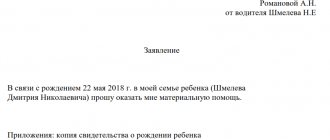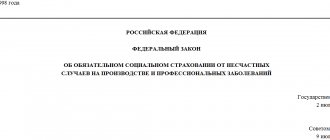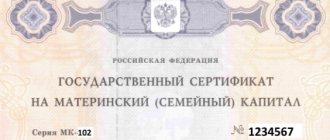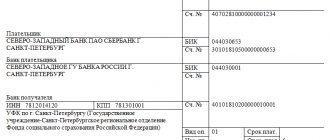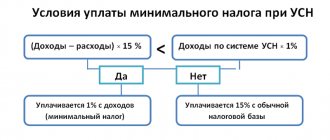Under what circumstances is financial assistance exempt from insurance premiums?
Financial assistance is exempt from insurance premiums in the following cases:
- If one employee is provided with financial assistance in the amount of up to 4,000 rubles within the billing period (subclause 11, clause 1, article 422 of the Tax Code of the Russian Federation).
- If financial assistance is issued at a time as compensation for material damage resulting from emergency circumstances, natural disasters, as well as if individuals suffered from terrorist attacks (subclause 3, clause 1, article 422 of the Tax Code of the Russian Federation).
- If financial assistance is allocated as a lump sum due to the death of an employee’s family member (subclause 3, clause 1, article 422 of the Tax Code of the Russian Federation).
- If financial assistance is allocated to an employee of the organization due to the birth or adoption of a child (subclause 3, clause 1, article 422). Amounts of such assistance must be allocated in the first year after birth or adoption, and the non-taxable limit is set at RUB 50,000. Each parent has the right to receive the above amount (letters from the Ministry of Finance dated May 16, 2017 No. 03-15-06/29546, dated November 16, 2016 No. 03-04-12/67082, Ministry of Labor dated October 27, 2015 No. 17-3/B-521 , dated January 21, 2015 No. 17-3/B-18 (clause 1), dated November 20, 2013 No. 17-3/1926).
For information about what documents are required to receive financial assistance in connection with the birth of a child, read the article “How to apply for financial assistance to an employee?”
Calculation of material benefits
When calculating the monthly financial benefits for loans provided to employees, use the following formulas.
If a loan in rubles is issued with interest, but the interest rate is lower than 2/3 of the refinancing rate, apply the formula:
| Material benefit from a loan issued in rubles at interest | = | 2/3 | × | Refinancing rate on the date of receipt of income | – | Interest rate under the agreement | × | Loan amount | : | 365 (366) days | × | Number of calendar days in a month or days of loan provision in a calendar month |
If a loan in foreign currency is issued with interest, but the interest rate under the loan agreement is below 9 percent per annum, calculate the material benefit using the formula:
| Material benefit from a loan issued in foreign currency at interest | = | 9% | – | Interest rate under the agreement | × | Loan amount | : | 365 (366) days | × | Number of calendar days in a month or days of loan provision in a calendar month |
Calculate the material benefit from an interest-free loan issued in rubles using the formula:
| Material benefit from an interest-free loan issued in rubles | = | 2/3 | × | Refinancing rate on the date of receipt of income | × | Loan amount | : | 365 (366) days | × | Number of calendar days in a month or days of loan provision in a calendar month |
If an interest-free loan is issued in foreign currency, calculate the material benefit as follows:
| Material benefit from an interest-free loan issued in foreign currency | = | 9% | × | Loan amount | : | 365 (366) days | × | Number of calendar days in a month or days of loan provision in a calendar month |
If the loan was repaid in parts within a month, calculate the material benefit as follows:
| Material benefit from a loan issued in rubles at interest with partial repayment | = | 2/3 | × | Refinancing rate on the date of receipt of income | – | Interest rate under the agreement | × | Loan amount before partial repayment | : | 365 (366) days | × | Number of calendar days of loan provision in a calendar month until the day of partial repayment (inclusive) | + | ||||||||
| + | 2/3 | × | Refinancing rate on the date of receipt of income | – | Interest rate under the agreement | × | Loan amount after partial repayment | : | 365 (366) days | × | The number of calendar days of loan provision in a calendar month from the day following the day of partial repayment to the day of the next partial (full) repayment or to the last day of the month |
Follow the same procedure for partial repayment of a loan in foreign currency and an interest-free loan.
This procedure follows from the provisions of paragraph 2 of Article 212 of the Tax Code of the Russian Federation.
Situation: what refinancing rate should be used when calculating the material benefit (for personal income tax purposes) received by an employee from using an interest-bearing loan? Interest paid in arrears.
When calculating the material benefit, use the refinancing rate set on the last day of each month of using the loan.
And even if the employee is late in paying interest, he will have taxable income on this date. This procedure follows from subparagraph 7 of paragraph 1 of Article 223 of the Tax Code of the Russian Federation.
An example of determining the material benefit of a loan provided to an employee. Interest is calculated monthly based on 1/2 the refinancing rate
On May 28, Alpha LLC issued a loan in the amount of 1,800,000 rubles to one of its employees. at 1/2 the refinancing rate (conditionally). Under the agreement, interest is accrued monthly and repaid at the end of the agreement. The loan is not related to the purchase of housing. The employee must repay the debt on January 11 of the following year.
The number of days in 2021 is 366.
Refinancing rates (conditionally): – from May 28 to July 31 – 8 percent; – from August 1 to November 30 – 10 percent; – from December 1 to January 31 – 12 percent.
The accountant calculates personal income tax at the end of each month of using the loan.
May
The amount of interest accrued based on the refinancing rate in effect on the last day of May was: RUB 1,800,000. × 2/3 × 8%: 366 days. × 3 days = 787 rub.
Amount of interest accrued based on the actual rate under the agreement: RUB 1,800,000. × 1/2 × 8%: 366 days. × 3 days = 590 rub.
Material benefit: 787 rub. – 590 rub. = 197 rub.
Personal income tax on material benefits for May: 197 rubles. × 35% = 69 rub.
August
The amount of interest accrued based on the refinancing rate in effect on the last day of August was: RUB 1,800,000. × 2/3 × 10% : 366 days. × 31 days = 10,164 rub.
Amount of interest accrued based on the actual rate under the agreement: RUB 1,800,000. × 1/2 × 10%: 366 days. × 31 days = 7623 rub.
Material benefit: RUB 10,164. – 7623 rub. = 2541 rub.
Personal income tax for material benefits for August: 2541 rubles. × 35% = 889 rub.
December
The amount of interest accrued based on the refinancing rate in effect on the last day of December was: RUB 1,800,000. × 2/3 × 12%: 366 days. × 31 days = 12,197 rub.
Amount of interest accrued based on the actual rate under the agreement: RUB 1,800,000. × 1/2 × 12% : 366 days. × 31 days = 9148 rub.
Material benefit: RUB 12,197. – 9148 rub. = 3049 rub.
Personal income tax on material benefits for December: 3049 rubles. × 35% = 1067 rub.
January
The amount of interest accrued based on the refinancing rate in effect on the last day of January was: RUB 1,800,000. × 2/3 × 12% : 365 days. × 11 days = 4340 rub.
Amount of interest accrued based on the actual rate under the agreement: RUB 1,800,000. × 1/2 × 12% : 365 days. × 11 days = 3255 rub.
Material benefit: 4340 rub. – 3255 rub. = 1085 rub.
Personal income tax on material benefits for January: 1085 rubles. × 35% = 380 rub.
How is the allocation of financial assistance in an organization formalized?
To allocate financial assistance, the manager must issue a special order. An application written in any form is required from the employee who needs help. Supporting documents should be attached to it, which can be a birth or adoption certificate of a child, a death certificate of a family member, etc.
In the payment document, in the column “Base of payment”, the accounting department must indicate the number and date of the manager’s order to allocate financial assistance. If payments are made in tranches rather than in a lump sum, such a link should be included in each payment document.
When financial assistance is subject to insurance premiums
In all other cases not specified in the previous paragraph, financial assistance, if provided to employees, becomes subject to insurance contributions. This norm is contained in subsection. 11 clause 1 art. 422 of the Tax Code of the Russian Federation.
The deadlines for making contributions are as follows: according to clause 3 of Art. 431 of the Tax Code of the Russian Federation, the payer of insurance premiums is obliged to transfer them to the budget no later than the 15th day of the month following the month of accrual.
Example:
The collective agreement of Omega LLC contains a provision according to which employees of the organization have the right to receive financial assistance. The decision to allocate it is the prerogative of the manager, whose order indicates the corresponding amounts.
In February 20XX, an employee of the enterprise, A.S. Chizhikov, in accordance with his application, was provided with financial assistance in the amount of 29,000 rubles. for paid treatment of the spouse during pregnancy.
In May 2020, another financial assistance was allocated to him, but in connection with the birth of a child - in the amount of 30,000 rubles.
As a result, contributions to compulsory social insurance will be charged only from 25,000 rubles. (29,000 – 4,000), since the non-taxable amount in the first case is 4,000 rubles. And financial assistance issued at the birth of a child is not subject to contributions at all, if it does not exceed 50,000 rubles. In this case, it is equal to 30,000 rubles.
For more information about whether financial assistance is subject to tax, and whether there is a chance of not paying insurance premiums with such assistance, see the Ready-made solution from ConsultantPlus. If you do not have access to the K+ system, get a trial online access for free.
Date of receipt of income
Material benefit must be calculated on the date of receipt of income. This date will be the last day of each month during the period for which the employee received the loan. Therefore, determine the amount of material benefit monthly, regardless of the date:
- payment of interest;
- obtaining and repaying a loan.
For example, on January 31, 2021, on February 29, 2021, etc. Even if the contract was concluded before 2021.
This is stated in subparagraph 7 of paragraph 1 of Article 223 of the Tax Code of the Russian Federation and explained by the Ministry of Finance of Russia in letter dated March 18, 2016 No. 03-04-07/15279 (brought to the attention of tax inspectorates by letter of the Federal Tax Service of Russia dated March 29, 2021 No. BS -4-11/5338).
You can withhold tax from your next salary. The amount of withholding cannot exceed 50 percent of the payment. This follows from paragraph 4 of Article 226 of the Tax Code of the Russian Federation.
Situation: at what point should one determine the material benefit from saving on interest on an interest-free loan. The loan was issued to an employee in 2015, will it be repaid in 2021?
Determine material benefits on the last day of each month starting January 31, 2021.
In this situation, it is necessary to apply new rules that are in force from January 1, 2021. That is, income in the form of material benefits from interest-free loans is determined on the last day of each month. For the first time, this needs to be done only starting in January 2021, when the new procedure has already come into force.
During 2015, the person did not have any income in the form of material benefits. Because according to the old rules, until 2021, income in the form of financial benefits was calculated on the date of loan repayment. Since the interest-free loan was issued in 2015, and its repayment period is in 2021, then the first date for receiving income will be January 31, 2021. This decision was given by specialists from the Russian Ministry of Finance.
The material benefit that you determine for the first time in the transition period is calculated from the date the loan was issued until January 31, 2021. In the future, until the loan repayment date, determine the income for each month on its last day (February 29, March 31, etc.).
This procedure follows from subparagraph 7 of paragraph 1 of Article 223 of the Tax Code of the Russian Federation. It is also confirmed by representatives of the Russian Ministry of Finance in private explanations.
An example of how to determine the material benefit of an interest-free loan. The loan was issued in 2015 with a maturity date in 2016
On October 1, 2015, Alpha LLC issued an interest-free loan to an employee in the amount of 600,000 rubles. The loan repayment period is March 31, 2016.
As of January 31, 2021, the accountant calculated personal income tax on material benefits for the period from October 1, 2015 to January 31, 2021.
The number of days in 2015 is 365, in 2021 – 366.
The refinancing rate (conditionally) from January 1, 2021 is 11 percent.
January 31, 2021:
Number of days of using the loan to calculate interest: – from October 2, 2015 to December 31, 2015 – 91 days; – from January 1 to January 31, 2021 – 31 days.
The amount of material benefits as of January 31 was: 600,000 rubles. × 2/3 × 11% : 365 days. × 91 days + 600,000 rub. × 2/3 × 11%: 366 days. × 31 days = 14,697 rub.
Personal income tax on material benefits for January: RUB 14,697. × 35% = 5144 rub.
In the future, the accountant calculates personal income tax at the end of each month of using the loan.
February 29, 2021:
The amount of material benefits as of February 29 was: 600,000 rubles. × 2/3 × 11%: 366 days. × 29 days = 3486 rub.
Personal income tax on material benefits for February: 3,486 rubles. × 35% = 1220 rub.
March 31, 2021:
The amount of material benefits as of March 31 was: 600,000 rubles. × 2/3 × 11%: 366 days. × 31 days = 3727 rub.
Personal income tax for material benefits for March: 3,727 rubles. × 35% = 1304 rub.
Is it necessary to subject insurance premiums to payments made to employees who have already resigned?
In some cases, an organization needs to pay financial assistance to former employees, for example, due to difficult life circumstances. In this case, there is no need to accrue insurance premiums, because the base for calculating insurance premiums includes remunerations paid in favor of individuals subject to compulsory insurance under employment contracts or civil contracts (clause 1 of Article 420 of the Tax Code of the Russian Federation). Since there are no of the above agreements between the former employees and the organization, there are also no grounds for calculating contributions.
Under what conditions are insurance premiums for work-related injuries calculated?
The objects for taxation of contributions for injuries are payments if they are in accordance with paragraph 1 of Art. 20.1 of the Law “On Compulsory Social Insurance against Industrial Accidents and Occupational Diseases” dated July 24, 1998 No. 125-FZ:
- when carrying out labor relations;
- execution of civil contracts, if they contain a clause on the payment of such contributions.
In sub. 3, 12 p. 1 art. 20.2 of Law No. 125-FZ defines the nature of material assistance, which is exempt from contributions for injuries. Contributions are not accrued:
- if financial assistance is issued at a time as compensation for material damage resulting from emergency circumstances, natural disasters, as well as if individuals suffered from terrorist acts (paragraph 2, subparagraph 3, paragraph 1, article 20.2 of Law No. 125-FZ);
- if financial assistance is allocated as a lump sum due to the death of an employee’s family member (paragraph 3, subparagraph 3, paragraph 1, article 20.2 of Law No. 125-FZ);
- if financial assistance is allocated to an employee of the organization due to the birth of a child or his adoption (paragraph 4, subparagraph 3, paragraph 1, article 20.2 of Law No. 125-FZ); the amounts of such assistance should be allocated in the first year after birth or adoption and should not exceed 50,000 rubles;
- if financial assistance was issued for other needs and its amount did not exceed 4,000 rubles. per employee for the billing period (subclause 12, clause 1, article 20.2 of law No. 125-FZ).
Thus, insurance premiums for injuries to employees will not be assessed on medical assistance in the same situations in which other insurance premiums are not charged on it.
Read about the rules for calculating and transferring injury contributions for payments subject to such contributions in this material.
How are “mortgage” employee benefits reflected in accounting?
As an example, we will give a scheme for reflecting in the accounting of employee compensation interest on a mortgage loan in an organization on the general taxation system.
Let’s assume that the amount of compensation for employee Ivanov was 50,000 rubles. In this case, the total ROT for the same period will be taken, for simplicity, to be equal to 1,000,000 rubles.
50,000 rubles paid to the employee are reflected:
- debit account 91 (subaccount 91-2 “Other expenses”);
- credit account 73 “Settlements with personnel for other operations.”
Posting is done on the basis of PBU 10/99.
At the same time, this expense must be recognized in full in accounting. But with tax accounting the situation is more complicated. 3% of 1 million – 30,000 rubles. Accordingly, the tax base for income tax can be reduced by only 30,000 rubles. Hence, a difference arises in tax accounting, which is called a permanent tax liability. This difference should be reflected on debit account 99 “Profits and losses” and on credit account 68 “Calculations for taxes and fees”.
From an amount exceeding 3% of the ROT, personal income tax is withheld in the amount
(50000 – 30000) × 13% = 2600 rubles
Accordingly, the employee is paid “in hand”
50000 – 2600 = 47400 rubles
Posting: debit account 73 – credit account 51.
Financial assistance in connection with the death of a close relative in 2020–2021
Separately, it is necessary to say about financial assistance in connection with the death of a close relative in 2020–2021.
The fact is that the employer can list in the salary regulations the immediate relatives of employees, in the event of whose death the employee is paid financial assistance. For example, this could be a spouse, children, parents, grandparents, parents-in-law, brothers/sisters. However, the procedure for assessing financial assistance with insurance premiums depends on whether the deceased relative was a family member or not.
Financial assistance in connection with the death of a close relative in 2020–2021 is not subject to insurance premiums only if these close relatives are family members within the meaning of Art. 2 of the Family Code of the Russian Federation (see letter of the Ministry of Labor of Russia dated November 9, 2015 No. 17-3/B-538). In this article of the Family Code, only the spouse, parents (including adoptive parents) and children (including adopted children) are considered family members. So if an employer pays financial assistance in connection with the death of, for example, a grandmother or parents of a spouse or brother/sister, then this financial assistance will be subject to insurance premiums in the general manner.
Property deduction for housing
An employee can confirm the right to exemption from personal income tax for material benefits received from savings on interest for the use of borrowed funds with the following documents from the tax office:
- notification, the form of which was approved by order of the Federal Tax Service of Russia dated January 14, 2015 No. ММВ-7-11/3;
- a certificate, the form of which is recommended by the letter of the Federal Tax Service of Russia dated July 27, 2009 No. ШС-22-3/594.
To receive a notification (certificate), the employee must contact the tax office at his place of residence with a set of supporting documents required when receiving a property deduction (documents confirming ownership of housing or acquisition of rights to housing under construction, as well as payment of expenses for the purchase (construction) of housing, land plot). It is enough for the employee to receive a supporting document (notification, certificate) and submit it to the organization once. If an organization has issued a long-term loan and the material benefit from interest savings occurs in different tax periods, then there is no need to annually require the employee to provide a new supporting document from the tax office.
This follows from the provisions of subparagraph 1 of paragraph 1 of Article 212, paragraph 3 of Article 220 of the Tax Code of the Russian Federation and clarifications of the Ministry of Finance of Russia in letters dated September 17, 2010 No. 03-04-05/6-559, dated September 14, 2010 No. 03- 04-06/6-211.
Financial assistance 4,000 rubles: taxation 2020–2021
And a few more words about the taxation of material assistance up to 4,000 rubles. Financial assistance 4000 rub. — taxation in 2020–2021 does not provide for its inclusion in the income taken into account when determining the tax base for personal income tax (clause 28 of article 217 of the Tax Code of the Russian Federation).
Find out more about in which cases financial assistance is subject to personal income tax and in which it is not, in ConsultantPlus. To do everything correctly, get trial access to the system and go to the Ready solution. It's free.
For the purposes of calculating income tax, material assistance to employees does not reduce the tax base (clause 23, article 270 of the Tax Code of the Russian Federation). At the same time, the Russian Ministry of Finance allows the accounting of financial assistance paid for vacation as part of labor costs. For income tax purposes and under the simplified tax system:
- financial assistance paid for vacation is taken into account in labor costs if its payment is provided for in an employment (collective) agreement or local regulation and is related to the employee’s performance of his job duties (clause 25 of article 255 of the Tax Code of the Russian Federation, subclause 6, clause 1 , clause 2 of Article 346.16 of the Tax Code of the Russian Federation, letters of the Ministry of Finance of Russia dated September 2, 2014 No. 03-03-06/1/43912, dated October 22, 2013 No. 03-03-06/4/44144, dated September 24, 2012 No. 03- 11-06/2/129);
- financial assistance paid for other reasons is not taken into account in tax expenses (clause 23 of article 270, clause 2 of article 346.16 of the Tax Code of the Russian Federation).
Read more about this relationship in the article “How does financial assistance to employees affect income tax?”
Loan issued for the purchase of housing
Withhold personal income tax on material benefits for loans issued to residents for the purchase (construction) of housing or land in a special manner.
If borrowing costs are not included in the property tax deduction that an employee receives when purchasing (constructing) housing or land, the material benefit is subject to personal income tax for residents at a rate of 35, and for non-residents at a rate of 30 percent. If an employee who is a resident has the right to receive a property tax deduction related to the purchase (purchase) of housing (land), the material benefit is not recognized as income subject to personal income tax. Even if at the time of the material benefit the property tax deduction has already been spent (or has not yet been used). Since a prerequisite for exemption from personal income tax is the citizen’s right to a deduction in relation to housing (land), for the construction or acquisition of which a loan was allocated.
This procedure follows from the provisions of subparagraph 1 of paragraph 1 of Article 212 and paragraph 2 of Article 224 of the Tax Code of the Russian Federation, as well as letter of the Ministry of Finance of Russia dated September 4, 2009 No. 03-04-05-01/671.
A loan provided to an employee to repay a mortgage loan for the purchase of housing is not a targeted loan. If an organization issues such a loan to an employee, the latter receives a material benefit from savings on interest, subject to personal income tax at a rate of 35 or 30 percent (letter of the Ministry of Finance of Russia dated October 7, 2009 No. 03-04-05-01/727).
Situation: how to calculate personal income tax on material benefits for an interest-free loan issued for the purchase of housing (land)? The loan amount exceeds the maximum amount of property deduction (RUB 2 million).
The amount of material benefit from an interest-free loan issued to an employee for the purchase (construction) of housing or land is not subject to personal income tax. This rule applies only to those employees who are entitled to receive a property tax deduction. Moreover, even if the loan amount exceeds the maximum amount of property tax deduction (2 million rubles), income in the form of material benefits is not subject to personal income tax in full. The legislation does not provide for such a condition for the exemption of material benefits from personal income tax as the maximum amount of property deduction. This follows from the provisions of subparagraph 1 of paragraph 1 of Article 212 and subparagraph 3 of paragraph 1 of Article 220 of the Tax Code of the Russian Federation.
Calculate the material benefit from an interest-free loan in the manner prescribed by paragraph 2 of Article 212 of the Tax Code of the Russian Federation.
A similar point of view is expressed in letters of the Ministry of Finance of Russia dated April 14, 2008 No. 03-04-06-01/85 and dated January 25, 2008 No. 03-04-06-01/20.
Results
Both the Tax Code of the Russian Federation and Law No. 125-FZ include a number of types of financial assistance in the list of payments not subject to insurance contributions. Among non-contributory financial assistance to employees, there are 2 groups:
- not taxed in full - these include payments made in connection with the occurrence of emergency situations (such as a natural disaster, terrorist attack, death of a family member);
- non-taxable until a certain amount is reached - this is financial assistance for the birth of a child (up to 50,000 rubles) and issued for other reasons (up to 4,000 rubles).
Financial assistance paid to people who are not in an employment relationship with the person making the payment will also not be subject to contributions.
And the obligation to charge contributions for injuries on the income of employees registered under a GPC agreement (subject to contributions for pension and health insurance) will arise for the employer only if such an obligation is provided for by the agreement.
You can find more complete information on the topic in ConsultantPlus. Free trial access to the system for 2 days.
Possible risks
The Federal Tax Service reminds us of the following presumption: the provisions of civil and tax legislation assume that:
- the actions of the payer that led to the receipt of tax benefits are economically justified;
- The information provided in the calculation of insurance premiums/declarations and financial statements is true.
In the opposite situation, tax authorities may suspect that the taxpayer (payer of insurance premiums) received such a benefit. This fully applies to forgiveness of loan interest to an employee.
ADVICE
Therefore, in labor relations, you should not get too carried away with such manipulations with the donation of interest on loans. In any case, they should not be of a private, systemic nature. Only (!) one-time.
At the same time, the Federal Tax Service warns: if the inspectorate, during tax control activities, identifies circumstances indicating the presence of signs of minimizing obligations through the execution of loan and gift agreements by a legal entity with affiliated persons, tax consequences may occur. Namely, the obligation to calculate insurance premiums for such a transaction.
Let us recall that affiliated persons are individuals and legal entities capable of influencing the activities of citizens and companies conducting business activities (clause 20, part 3, article 1 of the Law of July 18, 2009 No. 190-FZ “On Credit Cooperation”).
In the situation considered by the Federal Tax Service of Russia, the labor relationship between the borrower (employee) and the lender (employer) is the “ability to influence activities.”
Also see “Forgiveness of debt in the amount of up to 4,000 rubles The Ministry of Finance allowed not to impose personal income tax: conditions.”
Read also
30.09.2019


